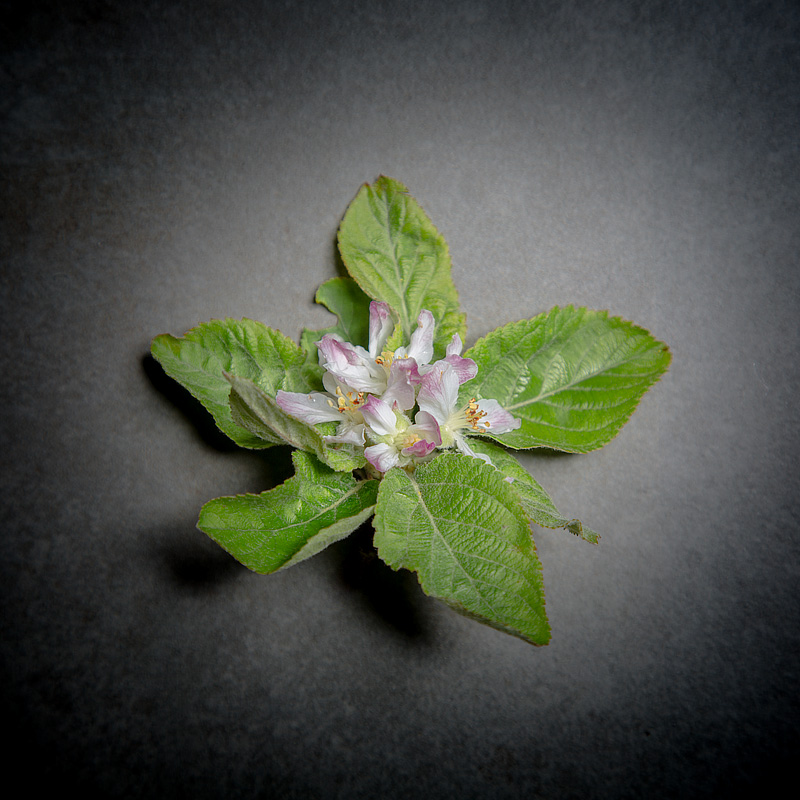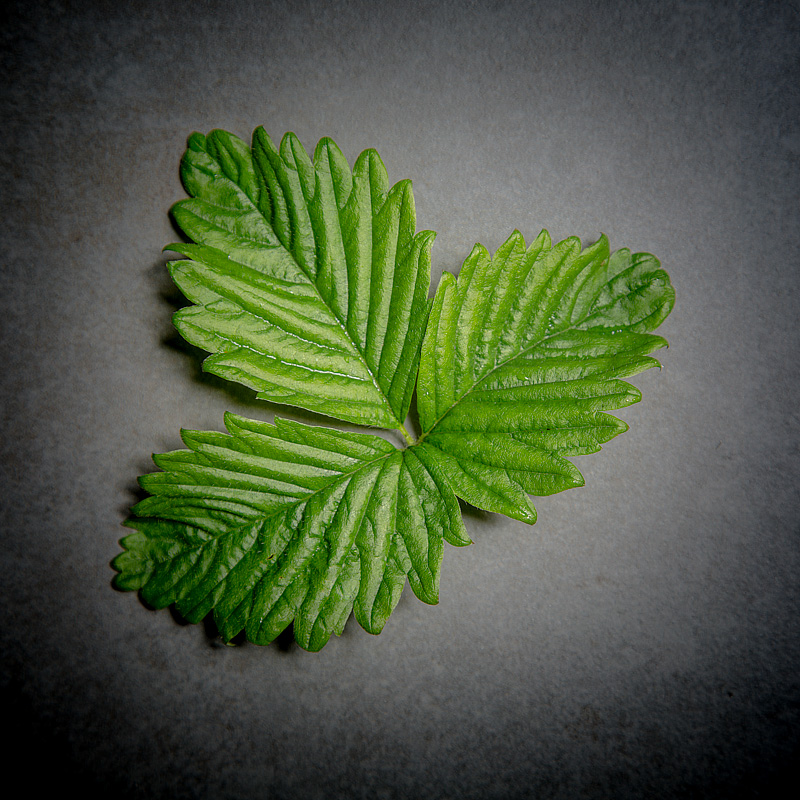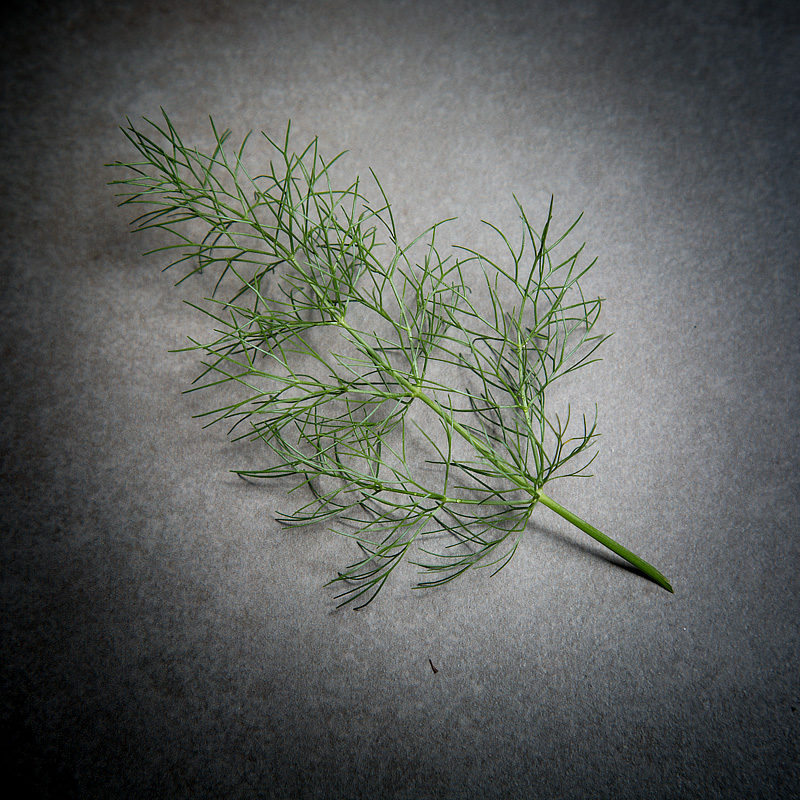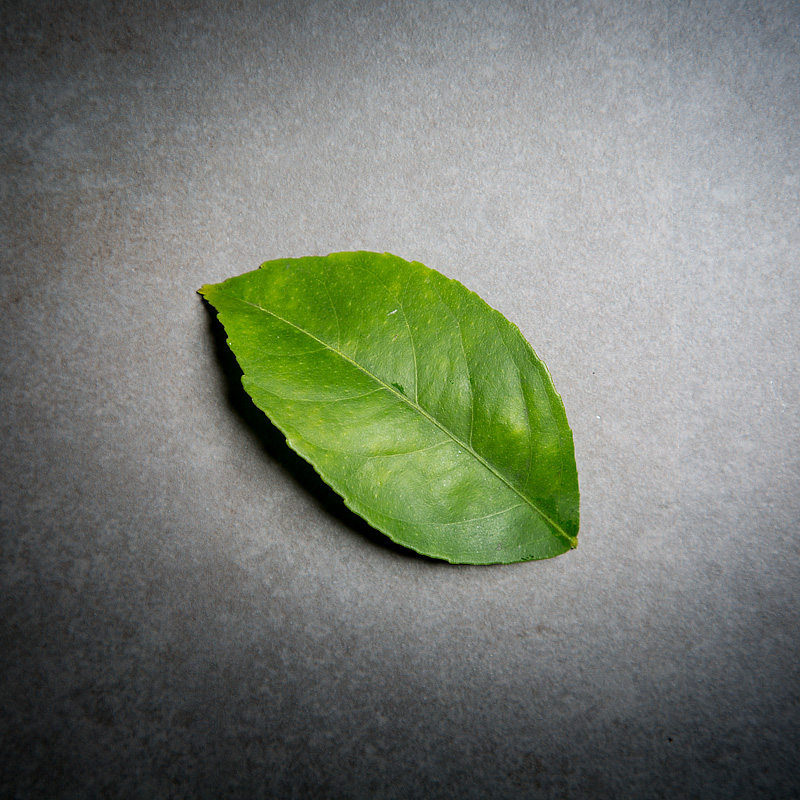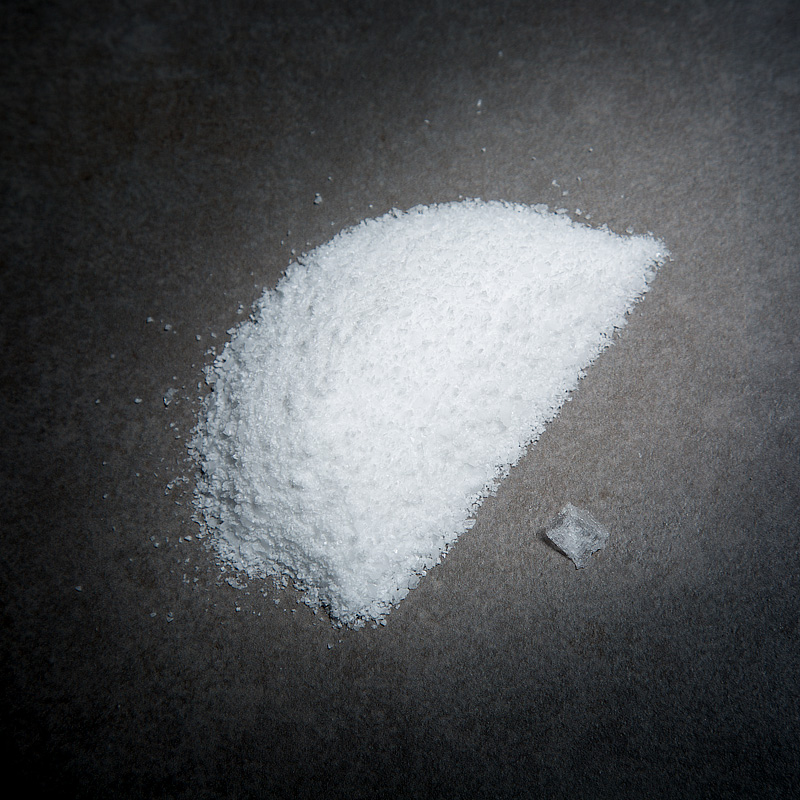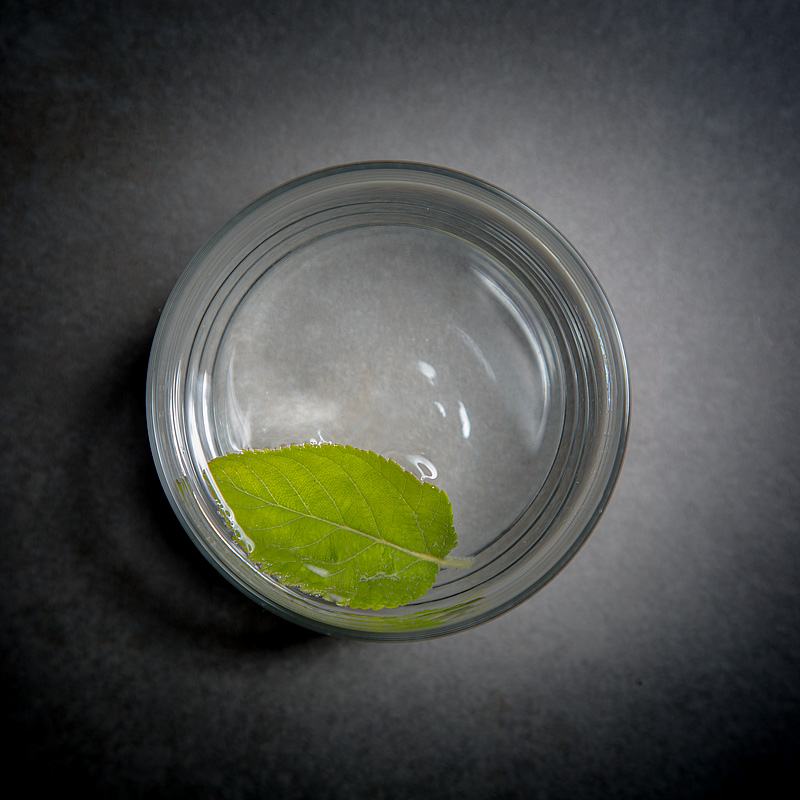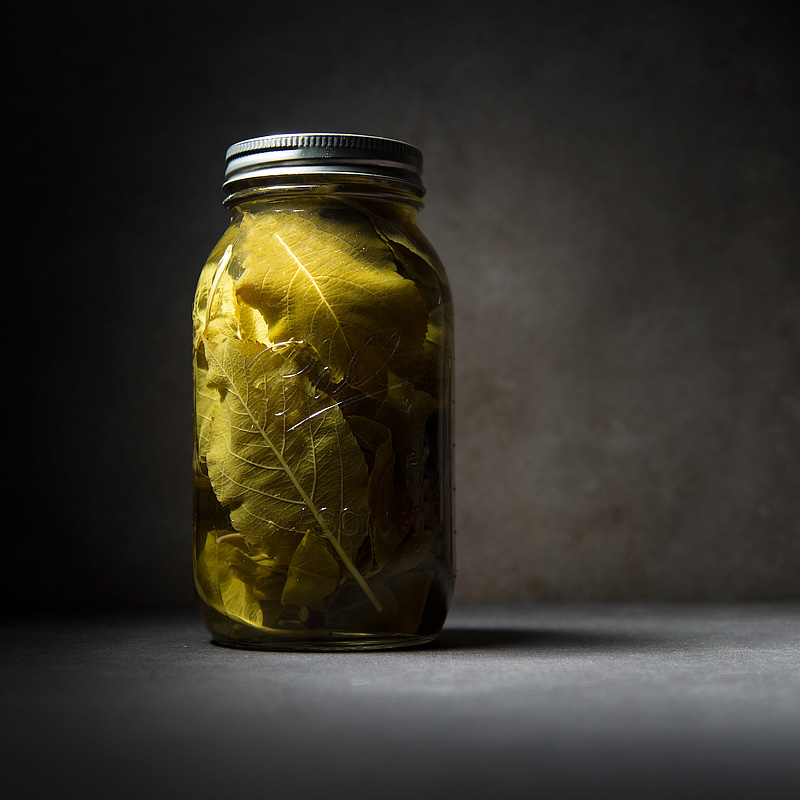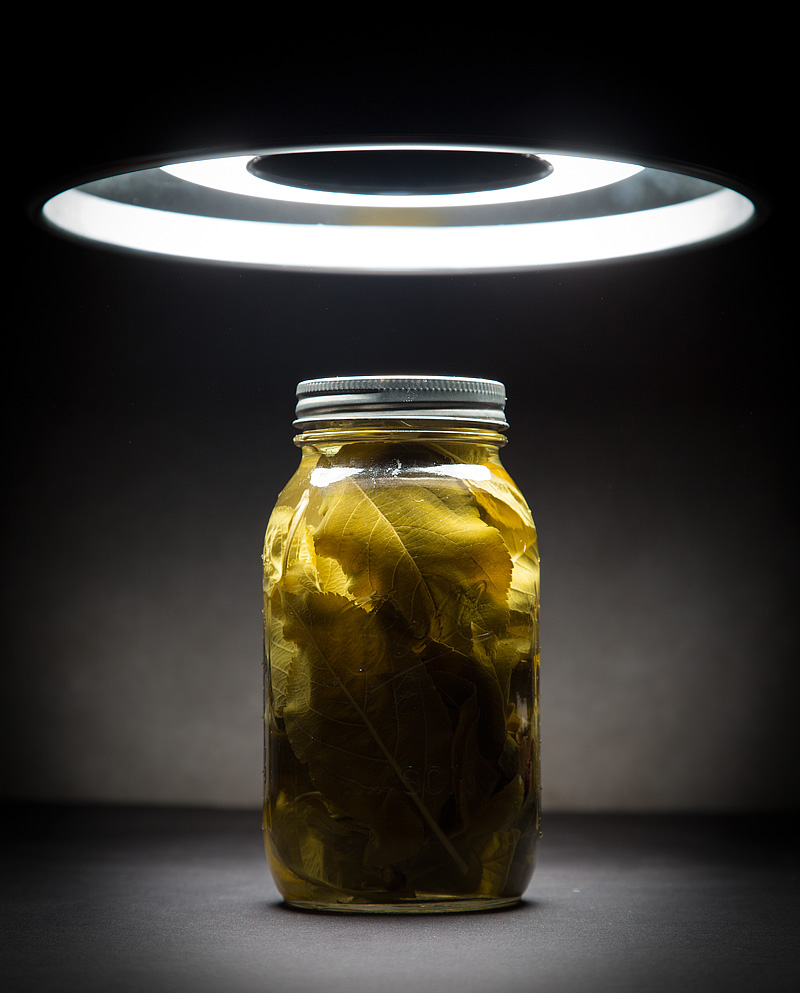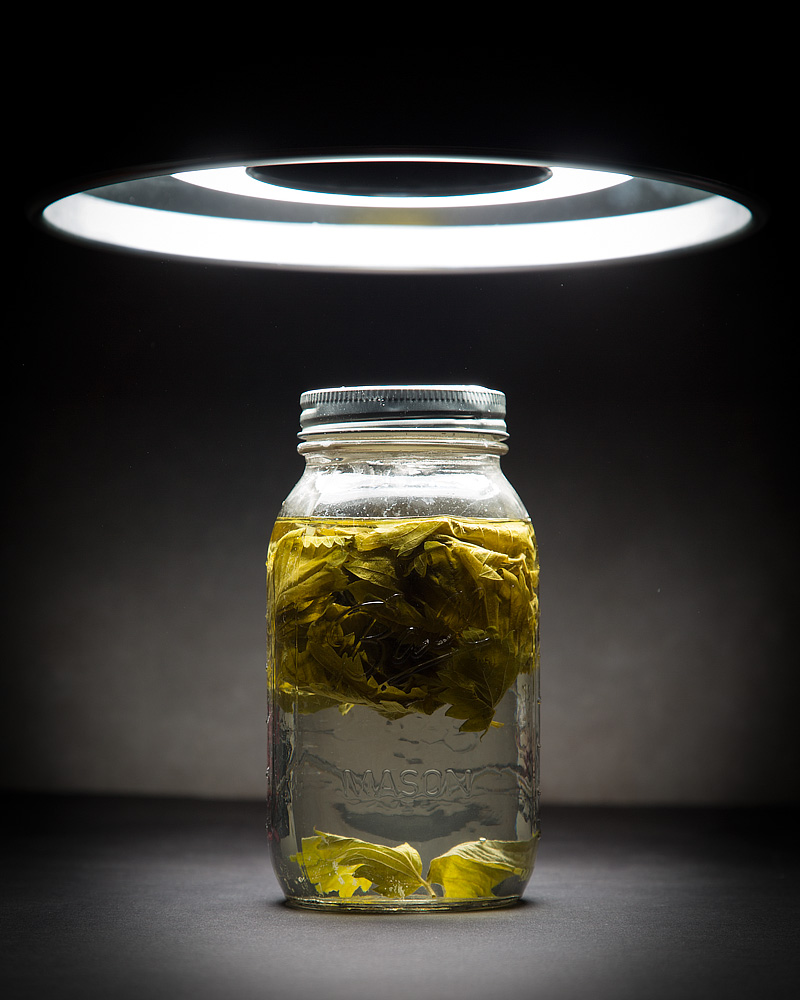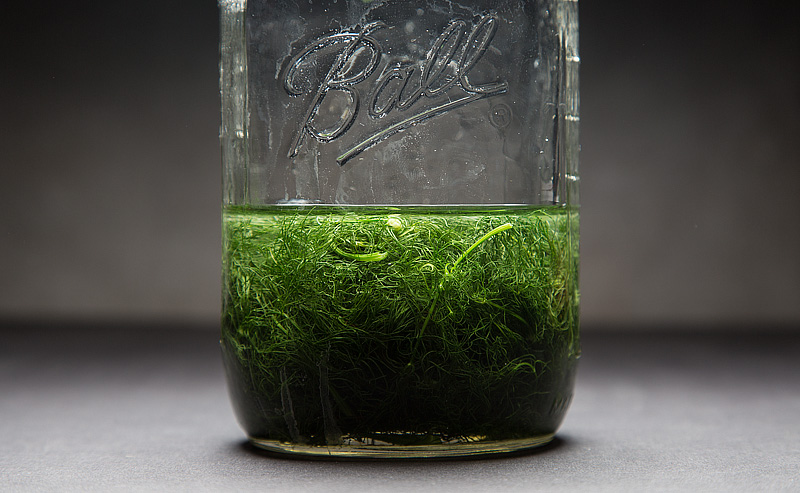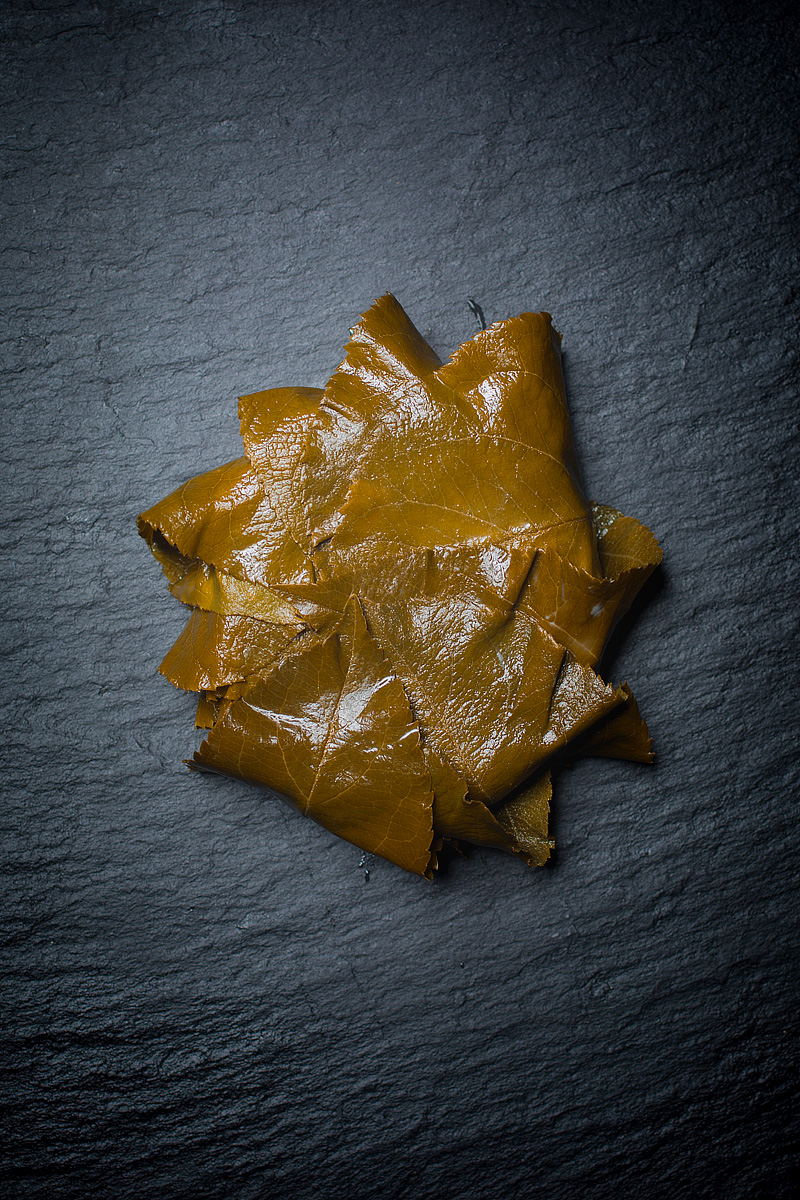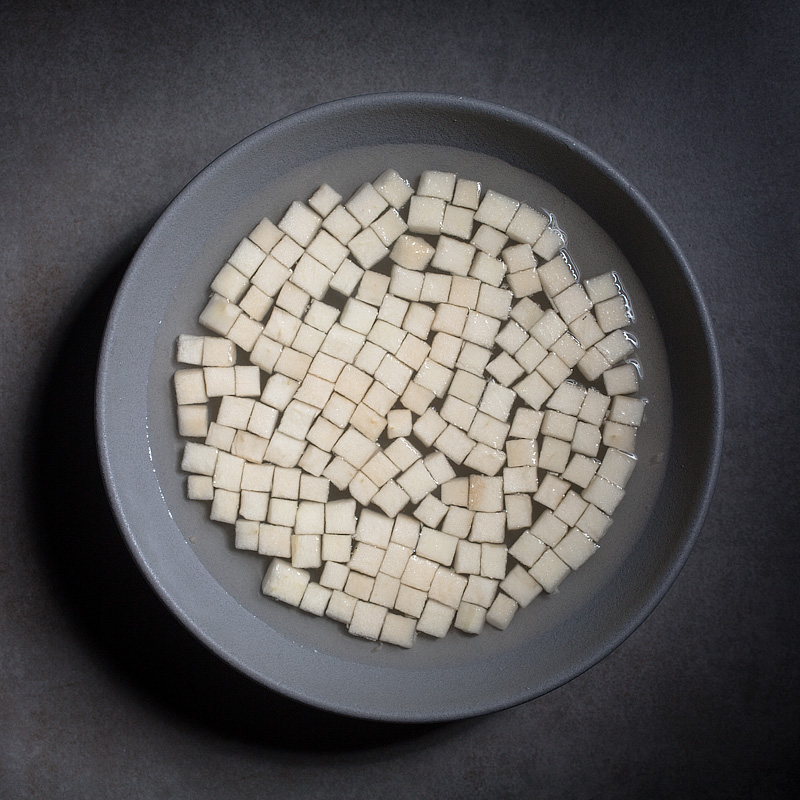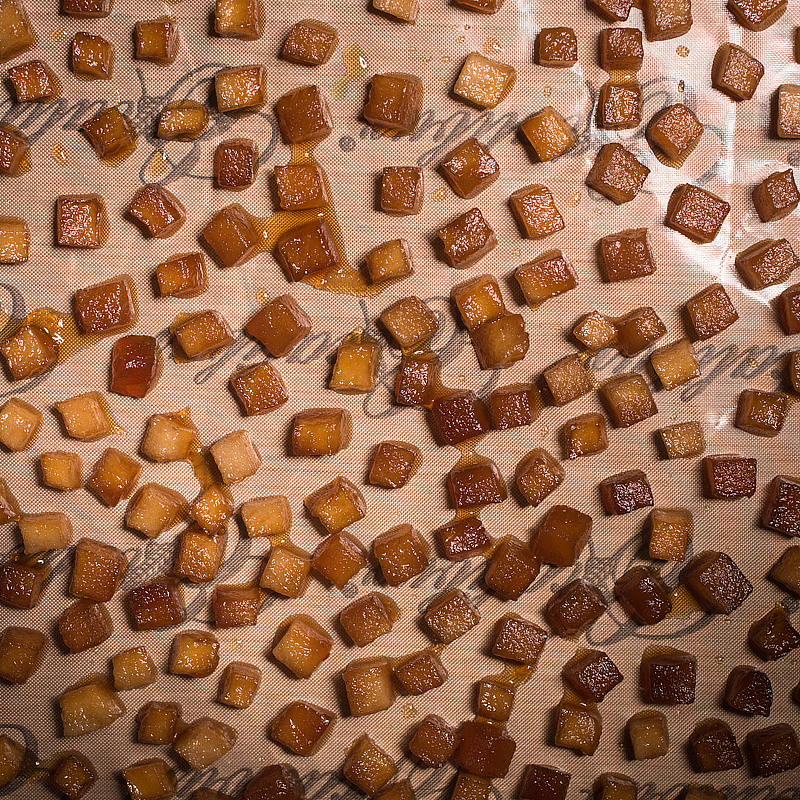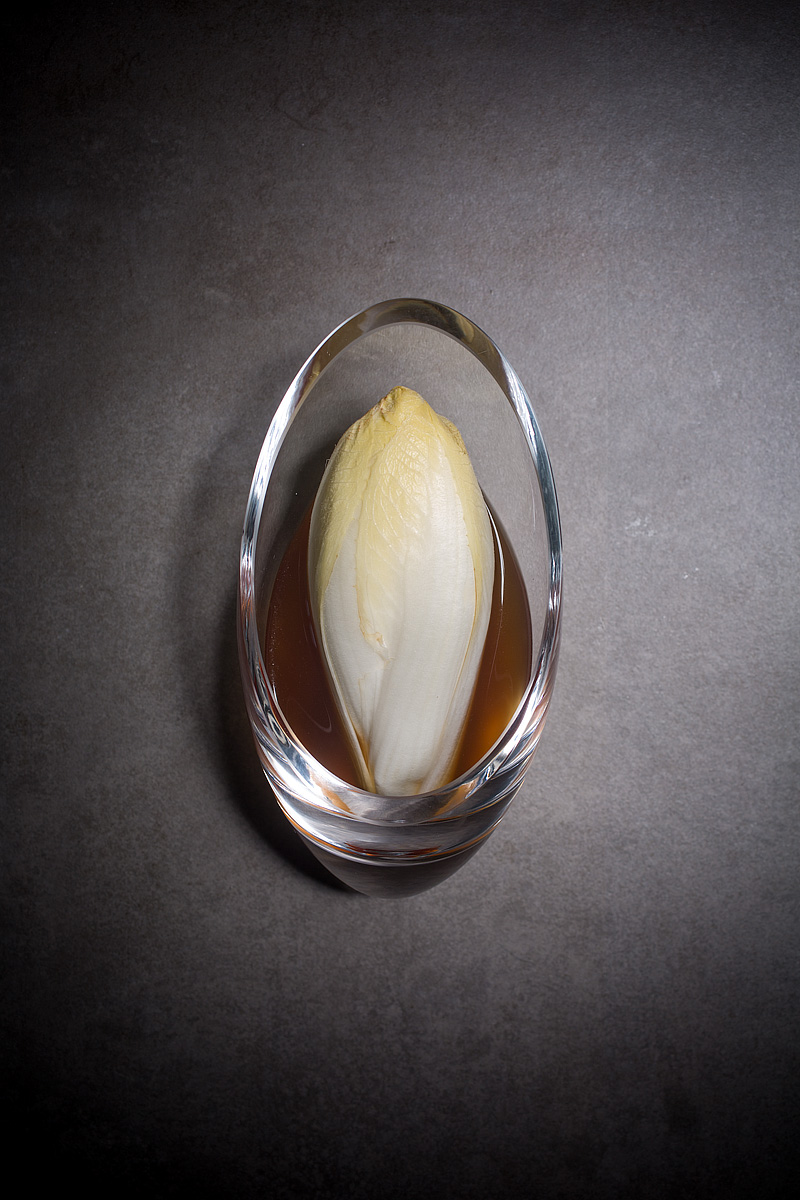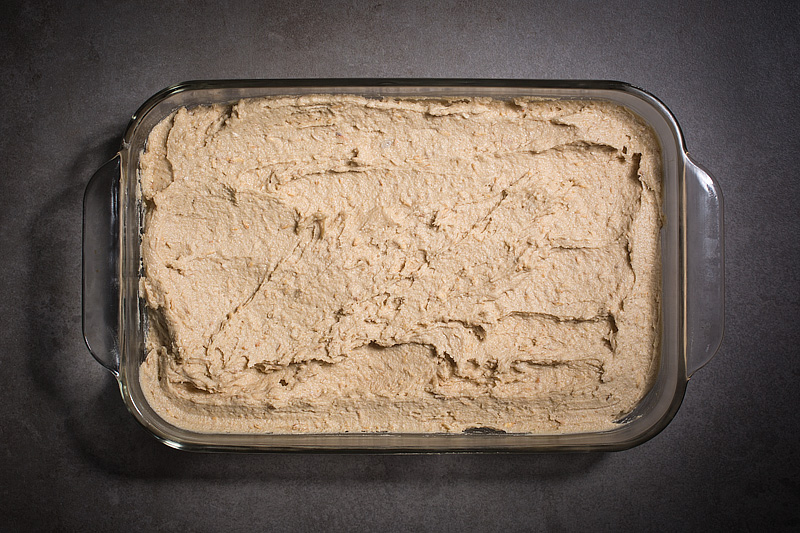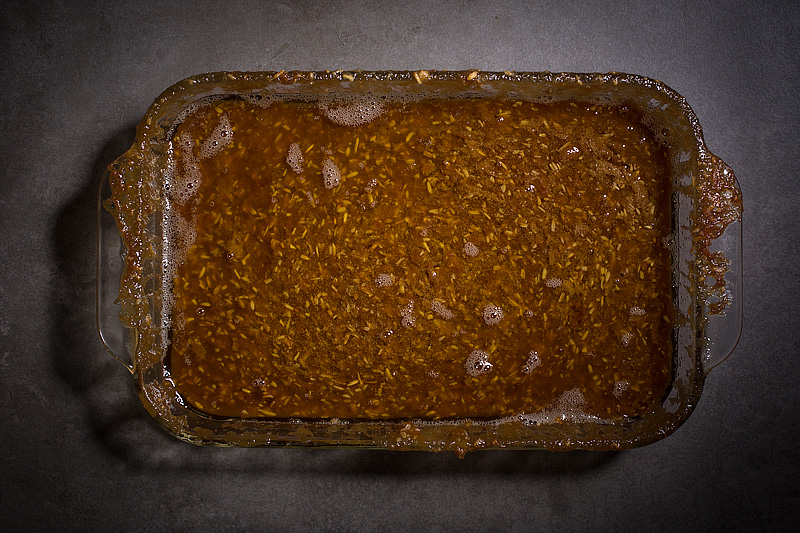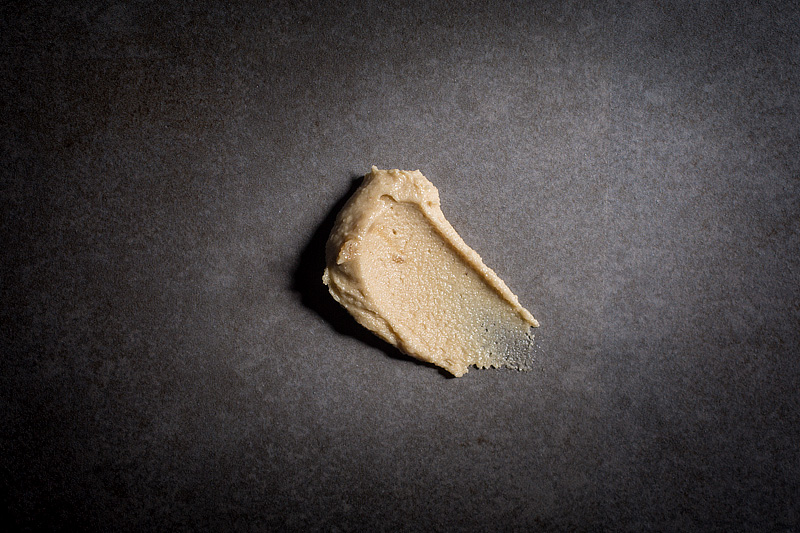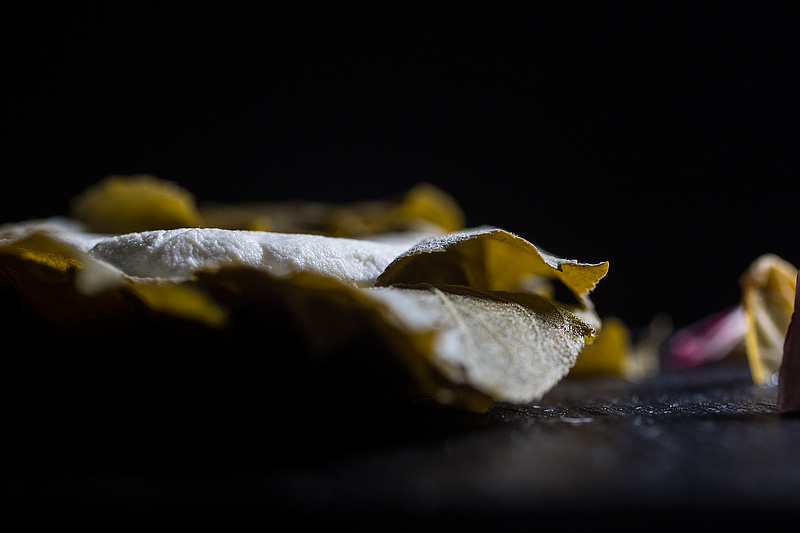But back to our apple dish here. The dish begins with some fresh young apple leaves. While I strongly suspect this dish is designed to be made in Autumn (when apples are generally ready to be harvested), apple trees are blooming this time of year, so I thought I’d try harvesting some young leaves from a few apple orchards in the area.
Because I was a bit captivated by the idea of pickling leaves, I figured I might also try this trick with some other plants in our garden, namely strawberry leaves, fennel fronds, and leaves from a meyer lemon tree growing in our backyard.
The leaves were all cleaned, then cooked gently in a 10% salt solution until tender. They were then cooled and stored in the salt solution overnight.
After 24 hours, I cracked into each jar to taste/smell the leaves. I’m not really sure what I was expecting, but each batch was incredibly mild. In terms of aroma, the apple leaves were fragrant in only the most subtle way. The lemon leaves had a more pungent smell that was definitely recognizable as citrus. The strawberry leaves had almost no aroma and tasted only of salt, and the fennel fronds had the most pronounced flavor but a diminished nose. I found the subtlety of the fruit tree leaves curious, and wonder if they get more fragrant when fruiting vs. blooming (the lemon tree is currently fruiting).
Nevertheless, I decided to forge ahead. I decided the fennel fronds probably wouldn’t offer enough coverage to effectively wrap cheese (nor, on further consideration, was I confident it’d be a good pairing), and the strawberry leaves didn’t seem to have anything to offer at all. I discarded the latter, and pushed forward with the fruit tree leaves.
I divided a large wheel of goat’s milk cheese from a local dairy into two smaller portions, marinating each in the brine of the fruit tree leaves for a few minutes before carefully wrapping them in leaves. These wheels were set aside in my fridge to cure for a week. Then I changed a whole bunch of diapers, got my face got screamed into several dozen times, and enjoyed a small moment of quiet fascination with Mir when I wrapped myself in christmas lights and bounced her gently on a large ball. Little things are really big things these days.
Several days later, I began work on the rest of the components for the dish. To make dried apple cubes, I diced several Gala apples, soaking them in a mixture of malic acid to keep them from browning as I worked.
These cubes were pressure-cooked in a thick brown sugar syrup. The pressure-cooking process renders the interior of the cubes silky smooth, sort of like a puree, while the outside maintains its integrity. The cubes were then gently drained and moved to a dehydrator tray, where I dehydrated them for a day to render them chewy.
Next up was caramelizing more brown sugar, then mixing this with cider and champagne vinegars. This mixture was used as a marinade for a couple of endive bulbs. After several hours of maceration, the bulbs were sliced into small squares and set aside until service.
The final component was Oat Butter. The recipe is effectively that of a crumble: cubes of butter cut into a mixture of brown sugar, flour and salt are baked to yield a golden brown, dry-ish ‘cake’ that’s then meant to be pureed into a paste. At least, that’s the idea.
This is what this mixture looks like pre-bake:
Problematically, though, after baking, the mixture looks like this: a dense cake of sugar submerged under a pool of oily butterfat:
I ended up making this component several times, convinced at first that I’d just done something careless, but as my list of failures grew longer, I became more concerned at the validity of the recipe.
Let’s break it down. The recipe calls for:
- 440g brown sugar
- 12g salt
- 120g oats
- 160g flour
- 450g butter
Now, butter is about 80% fat, around 17% water, and the remainder is milk solids. This means that we have about 360g of fat that needs to go somewhere when this crumble is baked. Let’s assume that the water is easily bonded by the (very hydrophilic) sugar and salt, leaving the oats and flour to contend with the 360g of fat. Even if both absorb at 100% their own weight, we’re still left with a sizable amount of fat that needs to go somewhere, lest it simply be ostracized by the crumble and left to pool in a greasy mess above the rest of the mixture. This was consistently my experience, so I strongly suspect that this recipe is incorrect.
I consulted some recipes for what I think are similar end products in other cookbooks. Alinea has a few crumble recipes, and sure enough, the fat and water content of the butter are easily balanced by the flour and sugar quantities in the recipe. Christina Tosi corroborates this in her Momofuku Milk Bar “Crumb” recipes. I opted to leverage a little intuition to re-calibrate this recipe into something that I felt might work a bit better. Tweets to Chef Kostow about all of this went unanswered, so this is all a gut hypothesis.
What I finally ended up with was something that didn’t collapse into grease and (if kept cool. This is a careful procedure because of all the butter) could be pureed into something paste-like. With no other context, I aimed for a peanut butter consistency for my oat butter.
While my typical reflection of dishes I invest this much energy into is “Oh, it’s totes delicious”, this one was only “just fine”. It didn’t taste bad, but wasn’t particularly memorable. The heavy reliance on brown sugar here makes it seem like the real pairing here is apple and molasses; the apple cubes, endive, and oat butter all taste overwhelmingly like riffs on molasses.
The cheese itself was fine, not notably apple-y nor ‘ephemeral’ in any way. I’m super curious whether apple leaves offer more aromatic qualities when the tree is ripe for harvest; I might try this again in Autumn to see how harvested leaves compare. But it’s this idea alone that I find compelling enough to carry forward; the recipe itself seems a bit incorrect and top-heavy with brown sugar, and I’m unlikely to follow it verbatim again. The ideas it encompasses are interesting, but then again, I have a pretty heavy bookshelf of other cookbooks beckoning me…

